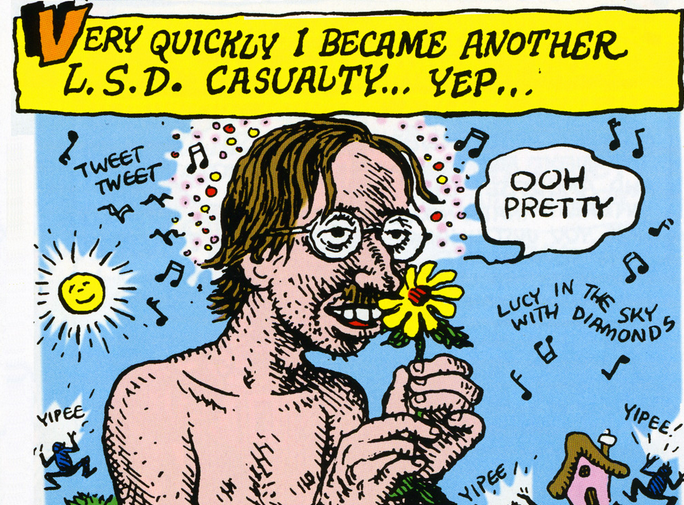If Facebook knows everything about you, it’s because you handed it the keys to your kingdom. You posted a photo, liked a favorite childhood TV show, and willingly volunteered your birthday. In other words, you handed it all the data it needs to annoy you with targeted advertising.
(In my case, it’s an ancient secret that helped a middle aged mom shave 5 inches off her waistline. Let me save you a click: acai berries.)
Filmmaker Brett Gaylor (a “lefty Canadian dad who reads science fiction) seeks to set the record straight regarding the web economy’s impact on personal privacy.
Watching his interactive documentary web series, Do Not Track, you’ll inevitably arrive at a crossroads where you must decide whether or not to share your personal information. No biggie, right? It’s what happens every time you consent to “log in with Facebook.”
Every time you choose this convenience, you’re allowing Google and other big time trackers to stick a harpoon (aka cookie) in your side. Swim all you want, little fishy. You’re not exactly getting away, particularly if you’re logged in with a mobile device with a compulsion to reveal your whereabouts.
You say you have nothing to hide? Bully for you! What you may not have considered is the impact your digital easy-breeziness has on friends. Your network. And vice versa. Tag away!
In this arena, every “like”—from an acquaintance’s recently launched organic skincare line to Star Trek—helps trackers build a surprisingly accurate portrait, one that can be used to determine how insurable you are, how worthy of a loan. Gender and age aren’t the only factors that matter here. So does your demonstrated extraversion, your degree of openness.
(Ha ha, and you thought it cost you nothing to “like” that acquaintance’s smelly strawberry-scented moisturizer!)
To get the most out of Do Not Track, you’ll want to supply its producers with your email address on your first visit. It’s a little counter-intuitive, given the subject matter, but doing so will provide you with a unique configuration that promises to lift the veil on what the trackers know about you.
What does it say about me that I couldn’t get my Facebook log-in to work? How disappointing that this failure meant I would be viewing results tailored to Episode 3’s star, German journalist Richard Gutjahr?
(Your profile… says that your age is 42 and your gender is male. But the real gold mine is your Facebook data over time. By analyzing the at least 129 things you have liked on Facebook, we have used our advanced algorithm techniques to assess your personality and have found you scored highest in Openness which indicates you are creative, imaginative, and adventurous. Our personality evaluation system uses Psycho-demographic trait predictions powered by the Apply Magic Sauce API developed at the University of Cambridge Psychometrics Centre.)
I think the takeaway is that I am not too on top of my privacy settings. And why would I be? I’m an extrovert with nothing to hide, except my spending habits, browsing history, race, age, marital status…
Should we take a tip from our high school brethren, who evade the scrutiny of college admissions counselors by adopting some ridiculous, evocative pseudonym? Expect upcoming episodes of Do Not Track to help us navigate these and other digital issues.
Tune in to Do Not Track here. You can find episodes 1, 2 and 3 currently online. Episodes 4–6 will roll out between May 12 and June 9.
Related Content:
The Internet’s Own Boy: New Documentary About Aaron Swartz Now Free Online
A Threat to Internet Freedom: Filmmaker Brian Knappenberger Explains Why Net Neutrality Matters
How Brewster Kahle and the Internet Archive Will Preserve the Infinite Information on the Web
Ayun Halliday an author, illustrator, and Chief Primatologist of the East Village Inky zine invites you to look into her very soul @AyunHalliday










